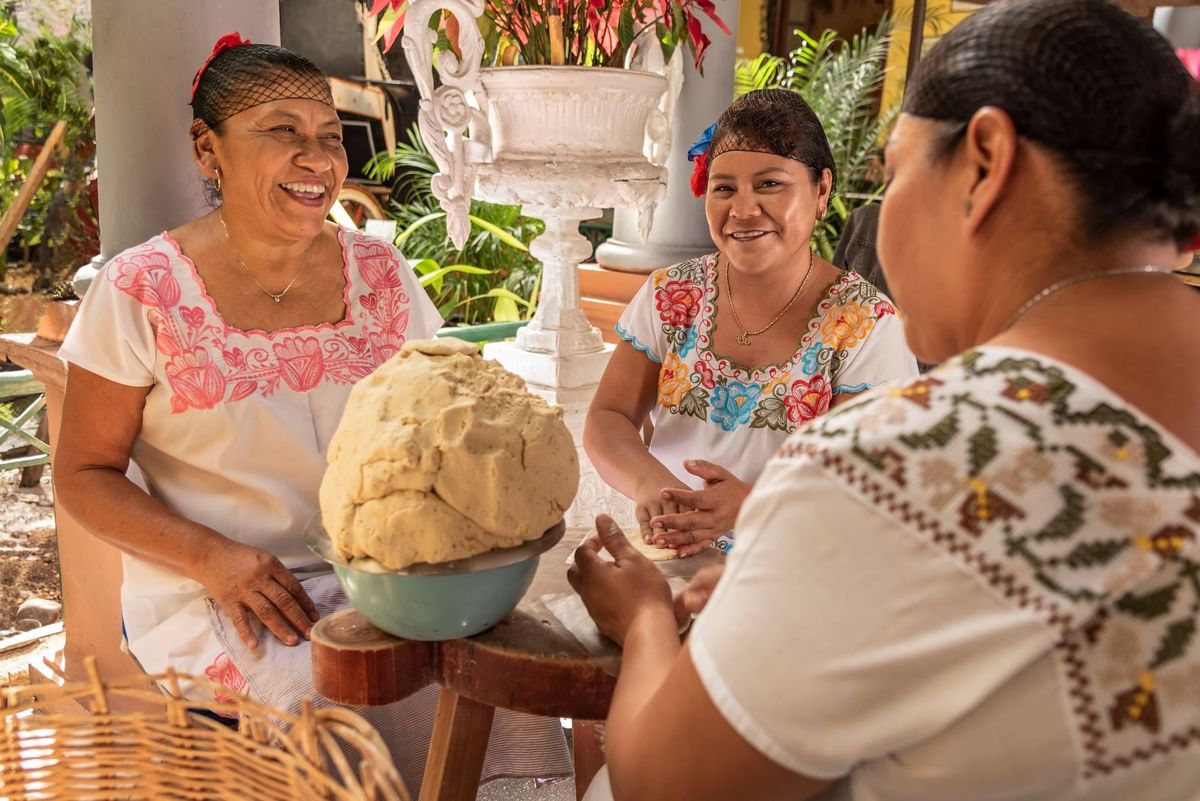Microfinance and innovation in the Asia-Pacific
Microfinance is not just about access to cash, but also access to people, ideas and innovation, according to research examining microfinance in Mexico.

Microfinance is not just about access to cash, but also access to people, ideas and innovation, according to research examining microfinance in Mexico.
The Context:
- Financing MSMEs (Micro, small and medium enterprises) is a way to promote sustainable and inclusive economic growth. APEC's 2022 Aotearoa Plan of Action, for example, calls on APEC economies to advance MSME access to finance and build their capacity to participate in the wider economy. Microfinance is part of this picture.
- Since it emerged in the 1970s, Microfinance has successfully opened credit to disadvantaged communities, and has had its share of controversy. Pioneering microfinanciers such as Nobel Peace Prize winners Muhammad Yunus and the Grameen Bank are renowned for breaking down barriers to finance and opening doors into the productive economy for the most marginalised people.
- Yet critics point out that potential exploitation of the poor remains due to microfinance's commercial underpinnings, high interest rates and lack of regulation. Research about its workings and impacts is vital.
- Dr Denis Griffin’s Mexico-based research examines how microfinance promotes innovation and other benefits for inclusive growth, through combining access to capital with the social-bonds formed through the group dynamics of micro-finance.
The Context talked to Dr Griffin about his research.
Trickle-up, not trickle-down
Microfinance emerged in the late 1970s as a compelling idea that turned traditional thinking about finance and poverty alleviation on its head. Its most notable pioneers include Bangladesh’s Muhammad Yunis. He was among the first to view impoverished communities differently from traditional banks. Through experimental lending programmes he found that impoverished people were just as likely to use loans to grow their business and repay their loans—with interest. This was the key. The original aim of early microfinance institutions (MFIs) such as Yunus’s Grameen Bank was to target the formation and growth of sustainable micro and small businesses, which were expected to repay 100% of the loans and interest. MFIs have since grown to serve millions of clients. But research continues about the benefits and harms.
Dr Griffin has investigated the mechanisms of microfinance since 1993 and has conducted research in the field since 2007, including in Mexico, where he lived for 22 years and undertook his PhD thesis. He sees microfinance as helping to build a more inclusive economy, where everyone can participate, and everyone benefits.
“Microfinance is more of a trickle-up system, rather than a trickle-down. Rather than building up wealth creation with big businesses, microfinance starts with the poorest elements of society and creates more wealth at the bottom of the socio-economic pyramid," said Dr Griffin.
His research has focused on the broader social and economic aspects of microfinance. He is especially interested in how the mechanisms of microfinance promote innovation among microentrepreneurs, and how social relationships drive the success of such schemes. He explores this in the yet to be published paper Micro-entrepreneurs Innovative Behaviour in Microfinance: The Role of Social and Financial Capital, led by Dr Annie Zhang at the University of Otago.
For this research, Dr Griffin cooperated with MFIs to survey their clients throughout rural towns and marginalised neighbourhoods in Mexico City. He spoke personally to borrowers and loan officers, with help from an assistant. “My assistant had to locate the homes of clients in Mexico City, which was difficult during the wet season in suburbs with poor infrastructure.”
Through connecting with micro-finance communities, Dr Griffin was able to examine the impacts of several microfinance mechanisms: solidarity groups, village bank groups, and individual loans.
Group loans are a central feature of microfinance—they offer lenders security and reduced transaction costs. Solidarity groups are said to function through peer group pressure, but Dr Griffin has found that they also enable members to learn from each other. “They are based on joint liability—if one person cannot repay the part of the loan they need to pay off that month, the other people in the group must compensate.” This helps the lender assess the risk. “As the initial group members had been personally invited by one another, the groups were formed by members. And so, the groups were generally composed of friends, family and acquaintances that they knew and trusted.”
Similarly, the larger village bank groups offer security through obligatory deposits in informal group savings accounts, with the 'bank' managed by members at the grassroots level. The group responsibility and resulting 'peer pressure' is a powerful force, but perhaps not in the way people have traditionally thought.
Dr Griffin’s biggest contribution to understanding of group loans has been finding that this peer-group pressure is not the cause of high repayment rates in Mexico as traditional wisdom assumes.
“Peer-group and community pressure can lead to increased loan defaults. I find that high levels of solidarity and relational capital in the group and community leads to higher levels of group loan repayments,” Dr Griffin explained.
Microfinance, social capital, and innovation
Dr Griffin’s surveys of MFIs in Mexico revealed that relational aspects not only lead to higher repayment but also to business innovation; but what exactly is relational social capital? In simple terms, through knowing and learning from other people, we grow our business knowledge and connection, and so are more able to answer questions such as, when is the right time to invest in my business? What should I invest in my business? Relational social capital circulates within personal relationships in various guises, such as trust, respect, and even friendship.
The research team found correlations between relational social capital, micro-business financial capital, and innovation, by measuring three key areas of innovative behaviours.
“If we are interacting harmoniously in a group, we are more likely to help each other with ideas and tips, and that will lead to idea creation, transformation, and promotion,” Dr Griffin explained.
Idea creation means new ways of working or non-traditional business techniques. Idea transformation is installing new equipment, tools, transportation or business infrastructure. While idea promotion involves learning and improving business skills. The team looked at how these behaviours are promoted through the social relational capital generated by microfinance.
“The overall idea is that relational social capital will increase financial capital (profit, sales, savings), which will then lead to higher levels of innovative behaviour. The more we include those from lower socio-economic backgrounds in our business strategies and research the more we can all gain financially."
Relational social capital also gives people better ongoing security. Belonging to a group with higher repayment rates makes it easier to gain access to more funds in the future, meaning securer access to credit and other support from microfinance institutions.
“This relationship between relational social capital and microbusiness financial capital creation is a fundamental feature of microfinance, according to my research findings, and indeed is key to the development of inclusive businesses,” Dr Griffin explained.

Microfinance, the Asia-Pacific and Aotearoa
While Dr Griffin’s research is based on data from Mexico, he believes the findings are relevant to the broader Asia-Pacific context, noting that APEC has previously offered support for commercially sustainable microfinance.
"APEC itself recognizes that microfinance is one tool for alleviating poverty and promoting economic development in the Asia-Pacific area,” Griffin observed. “Creating better access to finance for those in poverty in the Asia-Pacific regions allows for a more balanced, inclusive, and integrated economy.”
Microfinance in New Zealand may also become more significant, as organisations recognise a need to give access to finance to people who are excluded from mainstream financial services. “Microfinance can help any sort of small business,” Denis explains. “Particularly small community-based businesses”. Griffin hopes to see more innovation in access to finance in New Zealand. “With our society changing rapidly, we must not ignore the very poorest elements of society,” Griffin notes. “As Muhammad Yunus declares: “credit is a fundamental human right.””
"The more we help those living below or close to the poverty line to create socially, economically and ecologically sustainable businesses and improve their incomes, the more prosperous our economic system in New Zealand and the Asia-Pacific region will become,” Dr Griffin said.
Feature image: Preparation of flat bread tortillas in Yucatan, Mexico Photo: iStockphoto,.com/mofles



